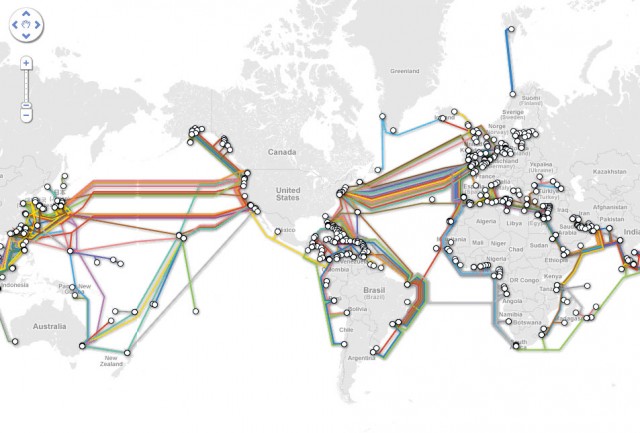Mission
 |
| Submarine cable map provided and managed by TeleGeography |
The unprecedented growth of optical fibre infrastructure in recent decades has underpinned telecommunications and the internet. It has made many things we often take for granted possible:
- broadband communications
- e-commerce
- video-on-demand and streaming media
- tele-presence
- high performance distributed computing.
It has dramatically changed the whole landscape of public, business and government activities, stimulating relentless traffic growth. There is an incessant demand for ever-higher communication bandwidth with reduced cost and power consumption per bit which necessitates not only medium-term technical solutions, but also longer-term research and visionary concepts to sustain the growth in information-carrying digital communications infrastructure.
The role of fibre communications, providing the capacity for the lion’s share of the total information traffic, is vital. It is estimated that 99% of all long haul inter-continental communications traffic is carried over optical fibres. It is becoming increasingly clear that the information loads carried by the global communication systems are rapidly approaching the fundamental capacity limits of current transmission technologies.
The communications research community and industry are under ever-increasing pressure to develop and introduce new approaches and non-incremental solutions for ultra-high capacity communication systems whilst reducing the cost and energy per bit, required to sustain the current increases in traffic. To date, the major constraint remains the nonlinear properties of the optical fibre medium. These limit the conventional techniques to increase capacity by simply increasing signal power. Thus, there is a pressing need for innovative and radically different approaches to coding, transmission and processing of information over both existing and new fibre systems and networks.
The mission of the UNLOC project is to address these challenges.
Our ambition is to understand, quantify and maximise the capacity of the optical fibre infrastructure by overcoming the nonlinear limits in optical fibre transmission. We aim to do this through ground-breaking signal processing, modulation and coding technologies. We aim to maximise the information carrying capacity in optical networks, with a potential two-orders of magnitude increase.
UNLOC is a transformational collaborative programme with strong industrial relevance between two internationally leading optical communications research groups who have led the developments in optical communications and networks, with numerous firsts in the field. The programme will have strong international impact and will place the UK at the forefront of international research in the field of high capacity optical communications.
